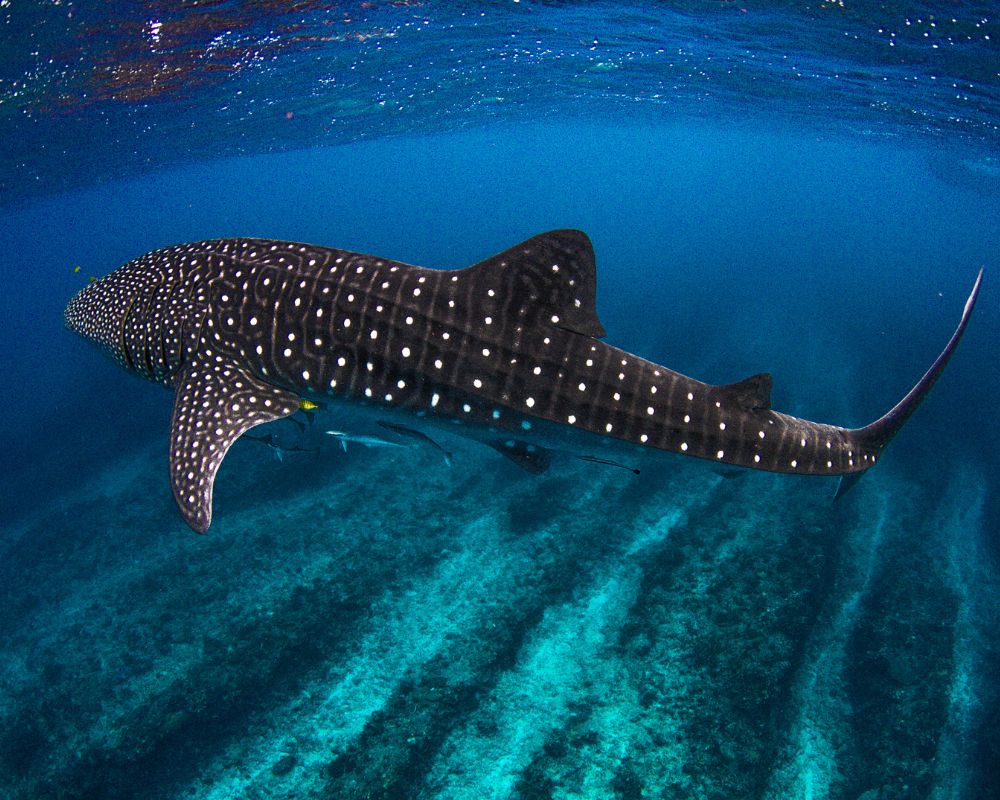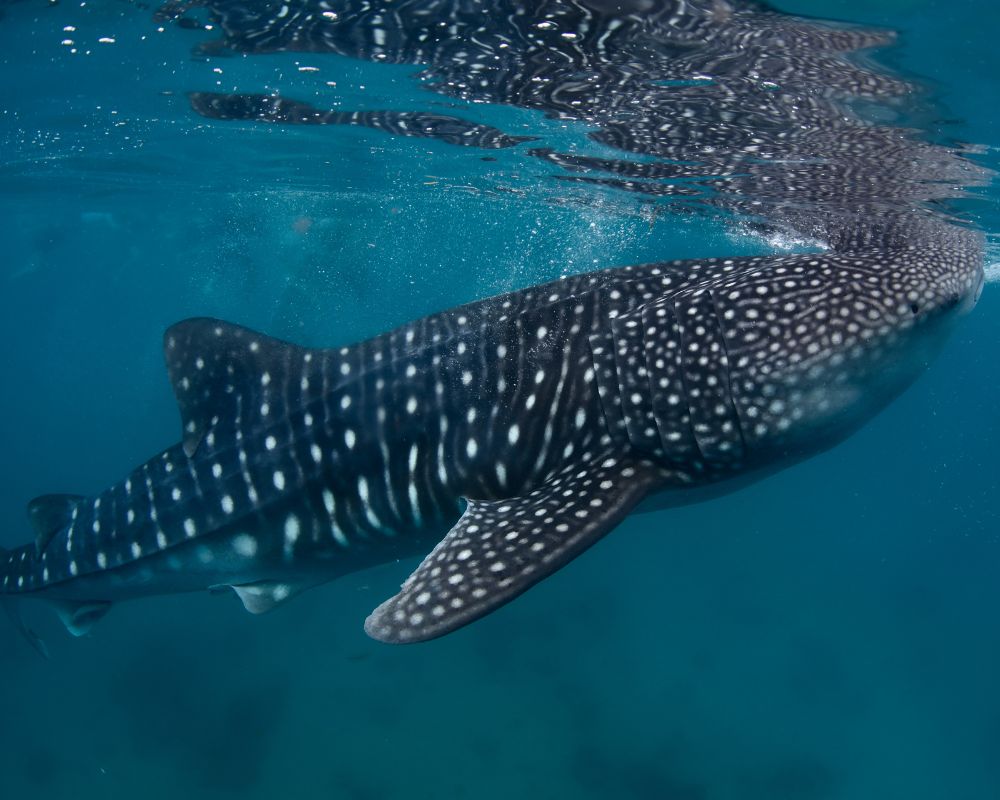Whale sharks are one of the most fascinating creatures in the animal kingdom, and their behavior is a topic of interest for marine life enthusiasts all over the world. From their enormous size and unique physical features to their feeding and social behavior, there is much to learn about these gentle giants. Whether you are an avid scuba diver, a marine biology student, or simply someone who is curious about marine life, understanding how whale sharks act is a fascinating journey that can teach us much about the complex world beneath the waves.
As we delve into the behavior of whale sharks, we will explore their physical characteristics, feeding habits, migration patterns, and social behavior. We will also examine the threats facing whale sharks today and the efforts being made to protect them. By the end of this blog post, you will have gained a deeper appreciation for these majestic creatures and a greater understanding of their important role in our oceans.
Let’s first look at whale sharks’ anatomy and how it affects the way it behaves:
Physical Characteristics of Whale Sharks

Whale sharks are the largest fish in the sea, with an average length of around 12 meters (40 feet) and a weight of up to 21.5 metric tons (47,000 pounds). Their flattened head and broad, flat mouth make them unique among shark species.
Anatomy And Physical Features
Whale sharks have a distinctive pattern of light spots and stripes on their dark blue-grey skin. These markings are like a fingerprint, with each individual having a unique pattern that can be used to identify them.
Whale sharks have five large gill slits on the sides of their head, which help them to breathe. They also have two dorsal fins and two pectoral fins, which they use for stability and steering.
Size And Weight
As mentioned, whale sharks can reach lengths of up to 12 meters (40 feet) and weigh up to 21.5 metric tons (47,000 pounds). However, some individual whale sharks have been reported to be as long as 18 meters (60 feet).
Unique Features
One of the most unique features of whale sharks is their broad, flat mouth. They use their mouth like a filter to feed on plankton, krill, and small fish. Whale sharks can consume up to 34 kg (75 pounds) of food per day.
Whale sharks also have a small sensory organ called the ampullae of Lorenzini, which helps them to detect electric fields in the water. This is useful for finding prey and navigating through the ocean.
Now, let’s jump into how these creatures behave when it feeds:
Feeding Behaviour of Whale Sharks
Whale sharks are filter feeders, which means that they consume plankton, krill, and small fish by filtering them out of the water. Their broad, flat mouth acts like a sieve, allowing them to capture huge volumes of water and filter out their prey.
Diet
The diet of whale sharks primarily consists of plankton, krill, and small fish. They are known to feed on copepods, krill, and small fish such as sardines, anchovies, and mackerel. They have also been known to feed on squid and jellyfish.[1]
Feeding Mechanism
When feeding, whale sharks swim slowly near the surface with their mouth open, filtering water through their gills. The plankton and other small organisms become trapped in the shark’s gill rakers, which act like a sieve, while the water is expelled out the gill slits.
Whale sharks are capable of filtering up to 6,000 liters (1,585 gallons) of water per hour. Once they have consumed enough food, they close their mouth and begin to digest their meal.
Feeding Habits
Whale sharks are known to exhibit a range of feeding behaviors, including solo feeding and group feeding. When feeding in groups, they create a vortex in the water, which helps to concentrate plankton and other small organisms in a smaller area. This makes it easier for the sharks to feed.
In the next section, we’re going to talk about whale sharks’ migration behavior:
Migration Patterns of Whale Sharks
Whale sharks are known to undertake long-distance migrations, traveling across entire oceans in search of food and favorable environmental conditions. Here’s what we know about their migration patterns.
Global Distribution
Whale sharks are found in all tropical and subtropical oceans around the world, with the highest concentration of individuals found in the Indo-Pacific region. They can be found as far north as Norway and as far south as New Zealand.
Annual Migration
Whale sharks are known to undertake an annual migration, although the exact timing and duration can vary depending on the region. In some areas, such as the Gulf of Mexico, whale sharks are present year-round, while in other regions they only appear during specific seasons.
During their migration, whale sharks are known to travel great distances, with some individuals traveling over 13,000 kilometers (8,000 miles) in a single year. They are able to do this thanks to their efficient swimming technique and streamlined body shape.
Migratory Routes
The migratory routes of whale sharks are still not well understood, although recent research has shed some light on their movements. In the Atlantic Ocean, for example, satellite tracking has shown that whale sharks travel between the Gulf of Mexico and the Caribbean Sea.
In the Indo-Pacific region, whale sharks have been tracked between Indonesia, the Philippines, and the coast of Africa. It’s believed that these migratory routes are influenced by ocean currents, food availability, and water temperature.
Importance Of Migration
Understanding the migration patterns of whale sharks is crucial for their conservation. By studying their movements, researchers can identify important feeding and breeding areas, as well as potential threats to their populations, such as habitat destruction and overfishing.
Social Behavior of Whale Sharks

Whale sharks are solitary creatures and are typically seen swimming alone or in small groups of up to three individuals. However, there have been reports of larger aggregations of whale sharks gathering in certain areas, particularly during feeding events.
Aggregations
During feeding events, whale sharks may congregate in large groups to feed on plankton-rich areas. These aggregations can consist of dozens or even hundreds of individuals and are a spectacular sight for divers and researchers alike.
While these feeding aggregations are well-documented, the reasons for other types of aggregations are still not well understood. It’s possible that whale sharks may gather in groups for social or reproductive reasons, but more research is needed to confirm this.
Reproductive Behavior
Despite their enormous size, very little is known about the reproductive behavior of whale sharks. It’s believed that they reach sexual maturity at around 30 years of age and that males may use their claspers to grasp onto females during mating.
In some areas, pregnant females have been observed, suggesting that whale sharks may give birth to live young. However, no one has ever witnessed the birth of a whale shark in the wild, and the location of their breeding grounds is still unknown.
Communication
Whale sharks don’t have vocal cords, but they may communicate with one another through body language and chemical signals. For example, researchers have observed individuals swimming in close proximity to one another, with their pectoral fins touching, which may be a form of social interaction.
In addition, it’s believed that whale sharks are able to detect chemical signals in the water, such as those released by injured or distressed individuals. This may help them to locate food sources or other whale sharks in the area.
Threats to Whale Sharks
Despite their enormous size and seemingly invincible appearance, whale sharks face a number of threats in the wild. Here are some of the most significant threats to these gentle giants:
Commercial Fishing
One of the biggest threats to whale sharks is commercial fishing. Although whale sharks are protected by international law, they are still hunted in some parts of the world for their meat, fins, and oil. The demand for these products has driven some populations of whale sharks to the brink of extinction.
Boat Strikes
Whale sharks are slow-moving creatures, which makes them vulnerable to collisions with boats and ships. This can cause serious injuries or even death, particularly if the animal is struck by a fast-moving vessel.
Plastic Pollution
As filter feeders, whale sharks are at risk from plastic pollution in the ocean. They may accidentally ingest plastic debris, which can cause blockages in their digestive systems and lead to starvation or other health problems.
Climate Change
Climate change is also a significant threat to whale sharks. Changes in ocean temperatures and currents can disrupt their feeding and migration patterns, and may also affect the distribution of their prey. In addition, ocean acidification can harm the plankton populations that whale sharks rely on for food.
It’s clear that whale sharks face a number of significant threats in the wild, and it’s up to all of us to take action to protect these magnificent creatures. By supporting conservation efforts and reducing our impact on the environment, we can help to ensure a bright future for these gentle giants of the ocean.
FAQs
How Do Whale Sharks Behave Around Humans?
Whale sharks are generally docile creatures and are known to be curious about humans. They may approach boats or swimmers, but they pose no threat to humans as they are filter feeders and do not have teeth.
What Does A Whale Shark Do All Day?
Whale sharks spend most of their day swimming and feeding on plankton and small fish. They may also spend time basking on the surface of the water to warm up.
Are Whale Sharks Playful?
There is no evidence to suggest that whale sharks are playful, and their behavior is primarily focused on feeding and migrating.
Do Whale Sharks Have Emotions?
It is difficult to say whether or not whale sharks have emotions, as they are not able to communicate in the same way that humans do. However, some research suggests that they may have the ability to feel pain and discomfort.
Do Whale Sharks Ever Sleep?
It is not known if whale sharks sleep in the traditional sense, as they need to constantly swim to breathe. However, they may rest at the surface of the water or in sheltered areas during periods of low activity.

